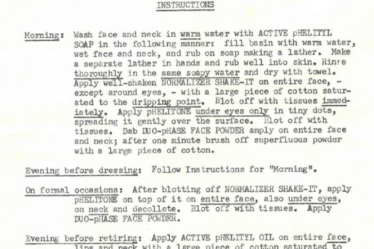
I had a strange kind of premonition, even before my dad spoke on that day in 2016, that something was very wrong. He said my sister Katie had been in a serious car accident, and that I needed to get to the hospital quickly. She had been airlifted to hospital in Plymouth. I went there to join our parents and my other sister, Meg. It became apparent very quickly just how bad it was. Katie, 21, had suffered head and abdominal injuries and it wasn’t clear that she would survive the first night. She was in intensive care for two weeks – and then the tube that was feeding her ruptured and she went into cardiac arrest.
It happened at night, and again, I got a call saying I needed to get to the hospital quickly. I was 23, a confident young man with a bit of an ego, but there in the waiting room, I had my first ever panic attack. We were called into a room and told she probably wasn’t going to make it, and to say our goodbyes. But again, she pulled through.
In the weeks she was recovering in hospital, I was travelling there three times a week and working from the waiting room. My environmental risk business was still in its infancy but it was growing quickly, so sometimes I was working 20 hours a day, but I wanted to be near Katie in case anything happened. I dealt with the stress by getting out on a hike or wild camping whenever I could, just to have 24 hours of escape and solitude.
As Katie recovered, I had the idea of walking the length of the UK’s 15 national parks within a year, climbing the highest point in each, as a way to raise money for the Devon air ambulance which had saved Katie’s life. I wanted to feel as if I was giving something back – but also, selfishly, it would be an escape for me.
I set off in January 2017, a year after Katie’s accident. On average, I walked 50 miles in each park so about 750 miles in total. Occasionally friends or family joined me, but mostly I did it alone. The trips had to be fitted in around work, so none took longer than three days, but doing them all over a short space of time made it physically challenging.
I walked the Cairngorms in two days, seeing a herd of reindeer, and Dartmoor in 36 hours. I’d carry everything I needed, including a tent to wild camp, though sometimes I would find somewhere to stay. It was amazing, and I experienced some of the most beautiful places in Britain. I especially liked the most remote places – I fell in love with the North York Moors, which is one of the least visited national parks, and Northumberland.
I had a moment of realisation while walking in Dartmoor. The isolation and breathtaking scenery helped my mind to switch off from the day-to-day, and made me realise how intense my work was. It gave me the motivation to take a deep breath and consider a totally new career path, even if it meant I would need to leave everything I had built up, and start again.
It didn’t happen overnight. In the years afterwards, I sold my business but stayed on, working for a multibillion-pound corporation and each month flying to Canada, where it was based.
My family had therapy after Katie’s accident, but I chose not to. My escape, my therapy, was being outdoors, being in remote places on my own. Carrying everything you need on your back and camping in the wild gives you an experience you don’t get from many things, because you are effectively in survival mode. You are only thinking about the next minute or the next 10 minutes. That was how I was able to disconnect from everything.
I wanted to build something that would allow other people to feel that. In 2021, I left the corporate job and, last year, set up CampWild with a friend; we’d been talking for years about how to make wild camping accessible. There are two main barriers. One is people’s potential lack of confidence and skill: knowing where to go, what to take, what to expect and also the legality of it – can I do it, will someone move me on? The second barrier is the amount of land locked away in private ownership. We negotiate with landowners to give people access to places.
Katie has pretty much made a full recovery. She is an amazing woman, and she has motivated me to try to help other people and do something I love. My work now involves going off for days at a time. I’ll switch off, roam around private land and find beautiful and previously inaccessible places for other people to go and have that same wonderful experience.



